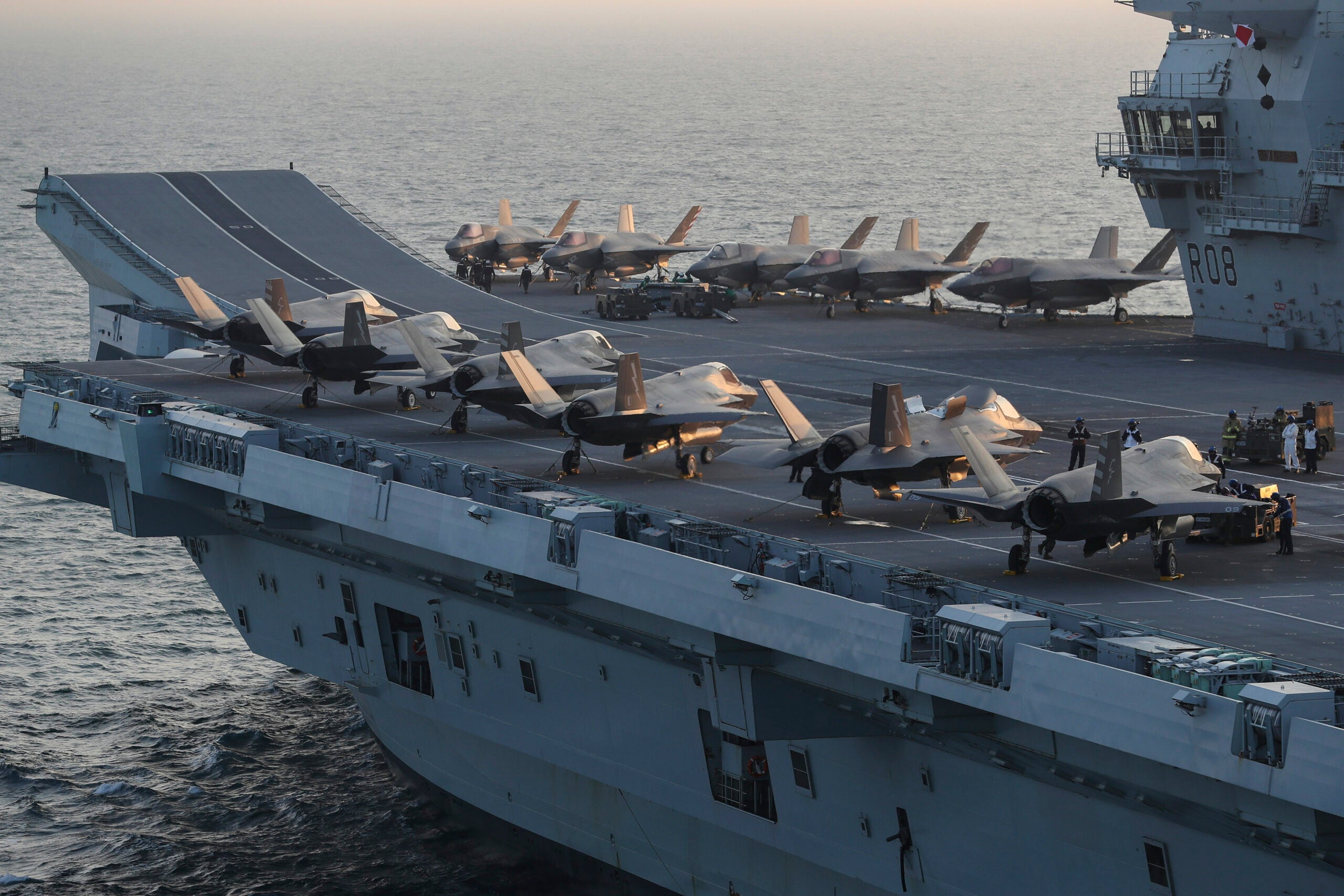
Speaking via video, Gilday said that, after months of work, he and the professional head of the Royal Navy First Sea Lord Admiral Tony Radakin were set to sign ‘a future integrated warfighting statement of intent’ that will outline a vision of ‘interchangeability’ between the two navies.
Gilday said: “I am proud to announce that the First Sea Lord and I will sign a future integrated warfighting statement of intent that will set a cooperative vision for interchangeability.”
Under the plans, the US and the UK will open a ‘tech bridge’ in London that can be used to transfer innovation between the two countries. The ‘tech bridge’ follows in the footsteps of a concept pioneered in the US which has seen 12 sites set up across the US that are used to share knowledge and innovation.
Gilday said: “We will synchronise pioneering capabilities, strengthen operating concepts, and focus our collective efforts to deliver combined sea power together.
“By organising our cooperation on Carrier Strike, underwater superiority, Navy-Marine integration, and doubling down on future warfighting, like unmanned and artificial intelligence, we will remain on the leading edge of great power competition.”
The CNO added that the trust between the UK and US Navies was ‘second-to-none’.
How well do you really know your competitors?
Access the most comprehensive Company Profiles on the market, powered by GlobalData. Save hours of research. Gain competitive edge.

Thank you!
Your download email will arrive shortly
Not ready to buy yet? Download a free sample
We are confident about the unique quality of our Company Profiles. However, we want you to make the most beneficial decision for your business, so we offer a free sample that you can download by submitting the below form
By GlobalDataThe announcement comes shortly after Royal Navy aircraft carrier HMS Queen Elizabeth, which this week is playing host to the forum, completed Exercise Joint Warrior, during which the carrier embarked F-35B jets from the UK and the US Marine Corps.
During the exercise, the US Marine Corps jets operated as though they were one single carrier air wing with UK aircraft, rather than operating from the aircraft carrier but acting independently.
Commenting on the carrier air wing, Radakin told the forum: “The significance of the United States of America, investing an Air Wing onto another nation’s aircraft carrier is a remarkable achievement. And it speaks to a remarkable relationship in terms of trust and confidence, and the ability to work together.”
On the aircraft carrier’s maiden deployment next year, the air component is set to be made up of a mix of aircraft from both the UK Royal Navy and Royal Air Force and the US Marine Corps.
As part of the exercise, the Carrier Strike group surrounding HMS Queen Elizabeth also included an Arleigh Burke-class destroyer from the US Navy USS The Sullivans.
Tech bridges and shared innovation
Speaking later in the day during a panel event with the First Sea Lord the Assistant Secretary of the US Navy James “Hondo” Geurts announced the creation of the first overseas US Navy tech bridge saying: “It will be a place for two way sharing of ideas. And it’s not just government to government. It’s with industry, it’s with academia, quite frankly, it’s with everyday citizens who may have an idea.
“And the power of these tech bridges is they’re not on bases. They’re not behind barbed wire. They’re not just only a requirements-pull, it’s a way there we can get idea push and accelerate that.”
Geurts described the London site as a ‘super-tech bridge’ adding it would ‘bridge in’ a new sense of community. The Assistant Secretary added that junior officers from both forces were ‘excited’ by the opportunity.
Radakin described the bridge’s ‘two-way’ nature, commenting on programmes in the UK that would be of interest to the US.
The First Sea Lord said: “We have a programme, whereby, we are investing in an extra-large underwater drone. That’s one of the largest underwater drones in the world, it is being built in Plymouth. And we’re working together so that we both benefit from that kind of technology.
“We have another UK programme, which is called MAPLE [Maritime Autonomous Platform Exploitation], which is the mechanism whereby you can control your drones, and you can speak to your drones, and they can speak to each other, which again, is a fundamental of effective warfighting.”
Radakin added that these technologies where the UK has had success and might be of interest to the US would be shared. Radakin went further adding: “It’s more than just the idea. These are actual projects, which then enable us to move much more quickly.
“And it might mean that it’s a crowdfunding approach, or that it spurns another idea in one of the other nations, and then we move on, that’s what we’re trying to do.”
Geurts echoed this saying: “[The] advantage of our tech bridge in London is we’re teamed up with an accelerator programme that the Royal Navy has established as part of a larger defence initiative over there. And so, rather than me trying to reinvent connections to all of those places, the best form of R&D for me is rip off and deploy.
“The fastest way to get something is to take what’s already there, and so we can immediately now tap into that.”



